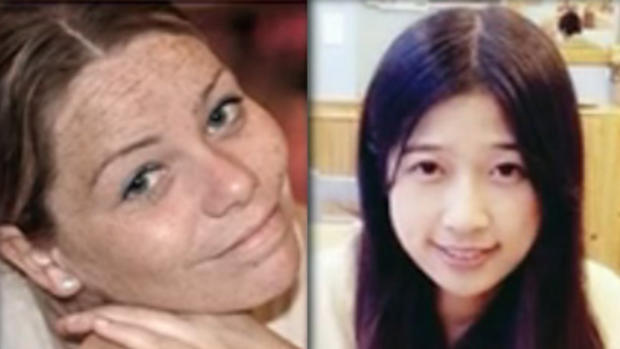Boston Marathon amputees learning to run again
CAMBRIDGE, Mass. Celeste Corcoran, in her yellow "Boston Strong" hat, navigated her way across the artificial turf on her artificial legs, a volunteer on each arm to keep her upright.
One of her assistants had a pair of prosthetics of his own.
"Normally you walk around and you see everybody with two legs. Especially in the summertime - all you see is legs," Corcoran said, pausing to choke back tears. "It's easy to miss yours.
"But when I see everybody here walking and running, it's OK," she said after a running clinic for victims of the Boston Marathon bombing and other amputees. "I just want to be able to do the things that I did before. ... So many people have my back, I feel like I can do it. I'm trying my hardest to enjoy being alive."
Dozens of amputees showed up at the Harvard athletic fields on a rainy Sunday morning along with their family and physical therapists and other volunteers to learn how to run - or run better - with prosthetic legs. Corcoran, who lost both legs in the explosions at the marathon finish line, wasn't much of a runner before, but she said she hopes that she will someday be able to join in a 5K or fun run.
"I've always wanted to be a runner but I used to get shin splints," she said. "I don't have shins anymore, so I'm hoping."
The joke has apparently been repeated so often that her daughter is ready for it. Sydney Corcoran, 18, is wearing a matching yellow hat along with ankle-length tights that showed the effects of the shrapnel that scarred her legs but did not require amputation. She was on Boylston Street with her mother when the bombs went off, waiting for her aunt to finish the marathon.
Across the field, a boy with two prosthetic legs, no more than 4 years old, was learning to kick a soccer ball with the carbon fiber blades. Two older boys wrestled playfully while the bigger one played keep-away with the younger's prosthesis.
"The most inspiring stories are at the back of the pack," two-time Boston Marathon winner Joan Benoit Samuelson said at the start of the clinic. "Our motto is 'There is no finish line.' There are always more challenges out there. You people who came out today are the spokesmen for those challenges."
Organized by the Challenged Athletes Foundation, which helps amputees and others with disabilities participate in sports, the clinic brought together marathon victims, those wounded in the military and other amputees. Coach Bob Gailey ran them through a series of increasingly complicated drills, then lined them up for an obstacle course that was the highlight of the day.
Similarly skilled participants match up in a relay race. Some runners fall; others have trouble weaving through the cones or stepping around the ropes. But everyone cheered.
One woman made her way through the lanes, saying aloud, with a smile, "I'm not going to fall this time." Another wore a T-shirt that said, "I am a Champutee."
"It's inspiring," said David Driscoll, a doctor who was working at the marathon's finish line medical tent on race day. Because his son, Brendan, was born with an incomplete tibia and fibula, the elder Driscoll has also volunteered with the Challenged Athletes Foundation.
"It's very enlightening to see them coming and to see they're overcoming that. It helps me, too, to work through it," Driscoll said. "I don't say, 'There, but for the grace of God, go I.' I say, 'How can I be more like them.'"
Many of those who lost legs on marathon day have been fitted for the heavy-duty prosthetics they call their everyday legs. Running is easier with the carbon-fiber blades - the "cheetah legs" made familiar by Olympian Oscar Pistorius - but insurance often doesn't cover them.
The Knights of Columbus, which previously provided prosthetics for victims of the 2010 earthquake in Haiti, have helped marathon victims get running legs or other prosthetics that help them regain a normal life.
"We can't let evil have the last word," Knights of Columbus spokesman Andrew Walther said, "and that's why we focused on this group."
For Heather Abbott, who had her left leg amputated after the marathon explosions, that means four prosthetics: The everyday leg, a waterproof one for swimming, another that allows her to wear high heels, and the running leg she received Saturday.
"I'm trying to do all the things I used to do," Abbott said.
